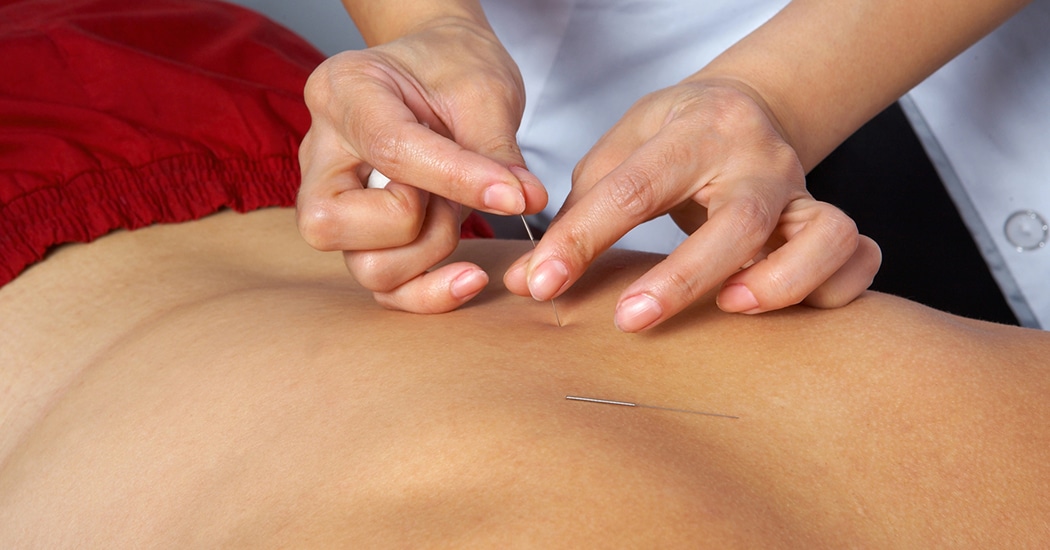We speak Spanish and Vietnamese

We speak Spanish and Vietnamese


Dry needling, also known as trigger point dry needling and intramuscular stimulation,[1][2] is a pseudoscientific technique used by various healthcare practitioners, including physical therapists, physicians, and chiropractors, among others.[3] Acupuncturists usually maintain that dry needling is adapted from acupuncture, but others consider dry needling as a variation of trigger point injections.[2] It involves the use of either solid filiform needles[4] or hollow-core hypodermic needles for therapy of muscle pain, including pain related to myofascial pain syndrome. Dry needling is mainly used to treat myofascial trigger points, but it is also used to target connective tissue, neural ailments, and muscular ailments.
What is Trigger Point Dry Needling?
Trigger Point Dry Needling, also known as Intramuscular Manual Therapy, is the inse1iion of a filament needle directly into or over a Myofascial Trigger Point in order to release tension and decrease pain. A Trigger Point is characteristic of “Myofascial Pain Syndrome,” which is a c01mnon muscle pain disorder. Trigger Point Dry Needling has been shown to produce analgesia in 87% of sites needled. Results of Trigger Point Dry Needling include a decrease in subjective complaints, a reduction in the need for medication, and decreased stiffness.
What is a Myofascial Trigger Point?
According to Travell and Simons, a Trigger Point is defined as a ” … hyperirritable spot in skeletal muscle that is associated with a hypersensitive palpable nodule in a taut band. The spot is tender when pressed, and can give rise to characteristic refe1Ted pain, motor dysfunction, and autonomic phenomena … ”
What this means is that a Trigger Point will present itself as a “knot” which is located along a taut band, or a hard felt line along the skeletal muscle. When compressed, pain is elicited either at the tiigger point or referred to another location of the body. Electrical activity and the biochemical make-up are altered at the trigger point. The muscle becomes fatigued and is at increased risk for further injury.
Trigger Point Dry Needling Outlook on Trigger Points
Trigger Point Dry Needling is a treatment that addresses dysfunction of the Neuromuscular System, specifically influencing the fascia and Trigger Points. When muscles develop Trigger Points, they neurologically remain tight, causing compression of vascular, neurological and joint/biomechanical struch1res; this obstrncts the normal function of that tissue.
What is Trigger Point Dry Needling?
Trigger Point Dry Needling, also known as Intramuscular Manual Therapy, is the inse1iion of a filament needle directly into or over a Myofascial Trigger Point in order to release tension and decrease pain. A Trigger Point is characteristic of “Myofascial Pain Syndrome,” which is a c01mnon muscle pain disorder. Trigger Point Dry Needling has been shown to produce analgesia in 87% of sites needled. Results of Trigger Point Dry Needling include a decrease in subjective complaints, a reduction in the need for medication, and decreased stiffness.
What are the risks of Trigger Point Dry Needling?
Trigger Point Dry Needling is a low risk procedure. The most common complaints after a needling session are usually muscle cramping and soreness. These sensations usually subside after 24 or 48 hours. Other minor adverse events include bleeding, bruising, and pain/aggravation at site of insertion.
What conditions can be treated by dry needling?
The purpose of Trigger Point Dry Needling is to treat myofascial pain. It has been suggested that Trigger Point Dry Needling may also treat the following conditions:

Need To Schedule An Appointment Or Have A Question? Just Fill Out Our Appointment Form And A Friendly Hoang Chiropractic Center Representative Will Contact You Shortly.

We would like to take this opportunity to thank you for choosing our practice for your chiropractic care.